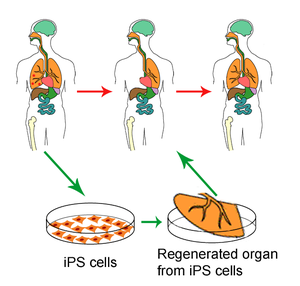 Image via Wikipedia
Image via WikipediaHow Stem Cells Heal Humans
As the stem cells grow in the damaged areas, they gradually become influenced by their surrounding cells and environment to become new cells similar to those cells they come in contact with. As they grow and become specific, they are able to transform into new veins, neurons, , bone marrow, muscle, eye, liver, kidney, etc., depending on the area where they are injected.
In the first stages of human development prior to the first cells becoming specialized, the stem cells develop best in environment with low oxygen. As the embryo grows and the stem cells become specific, they begin to require more oxygen. The more specialized, the more oxygen they need. For example, the brain is the most specialized organ of the body, using 20% of the oxygen consumed by the body while only being two percent of total body weight.
Whether the health challenge is Alzheimer's Disease, Stroke, head/brain Injury, Spine Injuries, Heart Problems, Diabetes, Parkinson's Disease, Cancer, Blindness, or any genetic/muscular abnormalities, the results of many human and animal studies using human umbilical cord stem cell treatments are very promising and a look into the future.




